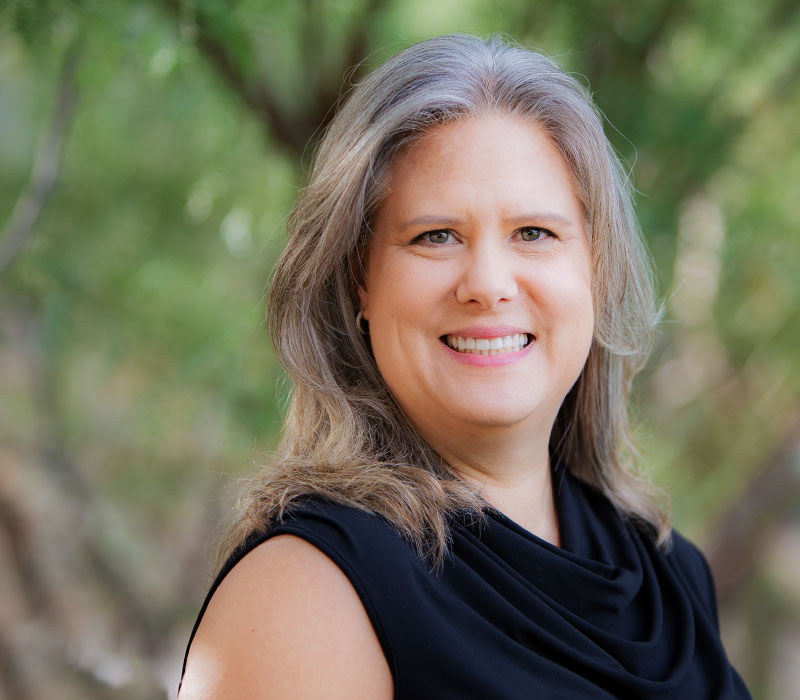Things have changed greatly since the ’50s, when only one-third of women were in the workforce13. Now, for women, there’s good news and bad news. Overall, it appears that the growing disparity between the wealthy and the middle class in America is reflected in data relating to women: the wealthiest women are getting wealthier, while lower and middle class women are losing ground.
Here are some facts and statistics about women and finances in honor of Women’s History Month.
Female Entrepreneurship is Growing
Between 2007 and 2016, female-owned firms grew five times faster than the national average. As of 2016, there were 11.3 million women-owned firms in the United States that employed nearly 9 million people and generated over $1.6 trillion in revenues.1 According to the National Association of Women Business Owners and the Small Business Administration, women employ approximately 27 million Americans.
Women Control the Wealth2, 3, 4, 7
- Women control nearly 60 percent of the wealth in the United States.
- The number of wealthy women in the U.S. is growing twice as fast as the number of wealthy men.
- There are more than half a million women with personal incomes of $100,000 or more.
- Women represent more than 40 percent of all Americans with gross investable assets above $600,000.
- 45 percent of American millionaires are women.
- 48 percent of estates worth more than $5 million are controlled by women, compared with 35 percent controlled by men.
- 60 percent of high-net-worth women have earned their own fortunes.
- Women control 80% of consumer spending.
- By 2030, women will control two-thirds of the nation’s wealth.
- Almost half—44%—of women are the primary breadwinners in their households, an almost four-fold increase since 1960.
Women are Inheriting More5
According to a 2009 study from the Boston College’s Center on Wealth and Philanthropy, women will inherit 70% of the money that gets passed down over the next two generations—excluding the increasing amounts they earn on their own. Women already own more than half of the investable assets in the U.S.
Portfolio Power
In the U.S. alone, women control $11.2 trillion, or 39%, of the country’s investable assets in the U.S., according to Morgan Stanley. And they’re paying attention to more than just generating returns—they care where their money goes. Women prefer to invest in companies they perceive to be making a positive difference in the world.6 Almost a third (27%) of married women say that they are in control of their household’s financial and retirement planning.4
Better Educated, Working Women Still Earn Less4, 7, 9, 10
In 2013, women surpassed men in terms of education. There were 21% more women than men obtaining an undergraduate degree, and 48% more women attaining a graduate degree than men. Even though women now hold the majority (52 percent) of management, professional and related positions in the U.S., the pay gap is still stark.
Ten years after graduating, degreed women earned less than degreed men who had been in the workforce only six years. The gender pay disparity was even larger and more immediate among graduates of the most elite universities like Harvard, Stanford and Princeton.
Overall, in 2015, women were the primary breadwinners in over 40 percent of American households, but earned only 78 cents for every dollar a man made. Earning less has a negative effect on families. Additionally, the effect of reduced Social Security benefits accrued put women and families at risk in the future.
Women Still Spend More Time Caregiving
It costs money to raise children, and many working women are squeezed between raising kids and taking care of elderly parents. Time equals money, except when it’s unpaid. The majority of primary caregivers in the U.S. are women (66 percent); 16 percent of female caregivers have taken a less-demanding job, compared to 6 percent of male caregivers.7 According to Women’s Institute for a Secure Retirement and National Center for Women’s Retirement Research, the average woman spends 15% of her working years outside of the workforce caring for children and elderly parents compared to the average man’s 1.6%. Women are also four times more likely to be a single parent through divorce or never marrying, according to U.S. Census Bureau figures.
Women and Retirement8
Due to pay disparity, unpaid family caregiving, greater longevity, and reduced retirement benefits, the average middle-class woman is at greater risk in retirement than men—and they’re aware of it.
- 26% of women work part-time compared to 14% of men, making them overall much less likely to be offered a workplace retirement plan. (77% of women who work full-time are offered a plan like a 401(k), versus 42% of part-time women.)
- 45% of women are not confident about retirement versus 32% of men. Only 10% of women are very confident that will be able to retire comfortably.
- 40% of women plan to retire after 65 and 13% say they will never retire at all.
- 50% of women plan to work in retirement—11% full-time and 39% part-time.
Longevity: Women Live Longer than Men11, 7
Because women live longer than men, they need more money to sustain them through retirement. According to reports from the Centers for Disease Control, the life expectancy for females is 81.2 years versus 76.4 for males. Rising health care costs—a 5% increase in 2014 alone—also has a disproportionate impact on women because they live longer.
Widowhood Creates Poverty with Poor Planning12
The average age that women become widows is only 59.4 years, according to a recent study published in the Journal of Financial Service Professionals. 80% of married men will die while married, and their wives are often unprepared. (Interestingly the study said that 70% of widows will fire their financial advisor, who likely did a poor job of preparing them for the financial realities they face as a widow.)
While poverty rates in the U.S. between men and women are not significantly different, elderly women living alone are much more vulnerable. The rate of poverty among elderly widows is consistently three to four times higher than elderly married women.
FOR FINANCIAL PROFESSIONALS USE ONLY – NOT FOR USE WITH THE PUBLIC.
Sources:
1 “The 2016 State of Women-Owned Businesses Report Commissioned by American Express OPEN, A Summary of Important Trends, 2007-2016.” Womenable.com. http://www.womenable.com/content/userfiles/2016_State_of_Women-Owned_Businesses_Executive_Report.pdf (accessed March 8, 2017).
2 Virginia Tech, “Women in Leadership and Philanthropy, Women’s Wealth and Philanthropy.” Vt.edu. http://www.wlp.givingto.vt.edu/wealth/index.html (accessed March 8, 2017).
3 Forbes, “11 Reasons 2014 Will Be a Breakout Year for Women Entrepreneurs,” by Geri Stengel, Jan. 8, 2014. Forbes.com. https://www.forbes.com/sites/geristengel/2014/01/08/11-reasons-2014-will-be-a-break-out-year-for-women-entrepreneurs/#7a6445be3f71 (accessed March 8, 2017).
4 CNBC, “For women, retirement can be a serious challenge,” by Matt Sommer, Jan 9, 2017. CNBC.com. http://www.cnbc.com/2017/01/19/for-women-retirement-can-be-a-serious-challenge.html (accessed March 8, 2017).
5 Time, “Why Wall Street Is Wooing Women and Their Future Wealth, by Linda Stern / Reuters, Jul 18, 2014. Time.com. http://time.com/money/2992759/what-do-women-investors-want/ (accessed March 8, 2017).
6 Morgan Stanley, “Wealth Management, Power of Purse Highlights Women’s Wealth Leadership,” Jan 23, 2015. Morganstanley.com. http://www.morganstanley.com/articles/power-of-purse (accessed March 8, 2017).
7 BMO Harris Bank, “BMO Report: Despite Controlling $14 Trillion in Wealth, American Women Still Have Challenges to Overcome,” Apr 2, 2015. Marketwired.com. http://www.marketwired.com/press-release/bmo-report-despite-controlling-14-trillion-wealth-american-women-still-have-challenges-tsx-bmo-2006436.htm (accessed March 9, 2017).
8 LifeHealthPro, “10 alarming facts about women and retirement risks,” by Daniel Williams, Mar 9, 2017, based on the Transamerica Center for Retirement Studies (TCRS) research. Lifehealthpro.com. http://www.lifehealthpro.com/2017/03/09/10-alarming-facts-about-women-and-retirement-risks (accessed March 9, 2017).
9 Center for American Progress, “The Big Difference Between Women and Men’s Earnings After College,” by Antoinette Flores, Sept 13, 2016. Americanprogress.org. https://www.americanprogress.org/issues/education/reports/2016/09/13/143412/the-big-difference-between-women-and-mens-earnings-after-college/ (accessed March 9, 2017).
10 U.S. News & World Report, “Women More Likely to Graduate College, but Still Earn Less Than Men,” by Allie Bidwell, Oct 31, 2014. Usnews.com. https://www.usnews.com/news/blogs/data-mine/2014/10/31/women-more-likely-to-graduate-college-but-still-earn-less-than-men (accessed March 9, 2017).
11 Centers for Disease Control, “National Vital Statistics Reports Volume 65, Number 4,” June 30, 2016. Cdc.gov. https://www.cdc.gov/nchs/data/nvsr/nvsr65/nvsr65_04.pdf (accessed March 9, 2017).
12 Partners 4 Prosperity, “Women and Wealth: Challenges, Changes, and Keys to Prosperity,” by Kate Phillips, Mar 5, 2016, based on Journal of Financial Services gated reports. Partners4prosperity.com. http://partners4prosperity.com/women-and-wealth-challenges-changes-prosperity (accessed March 9, 2017).
13 United States Department of Labor, Bureau of Labor Statistics, TED, The Economics Daily, “Changes in women’s labor force participation in the 20th century,” Feb 16, 2000. Bls.gov. https://www.bls.gov/opub/ted/2000/feb/wk3/art03.htm (accessed March 13, 2017).














